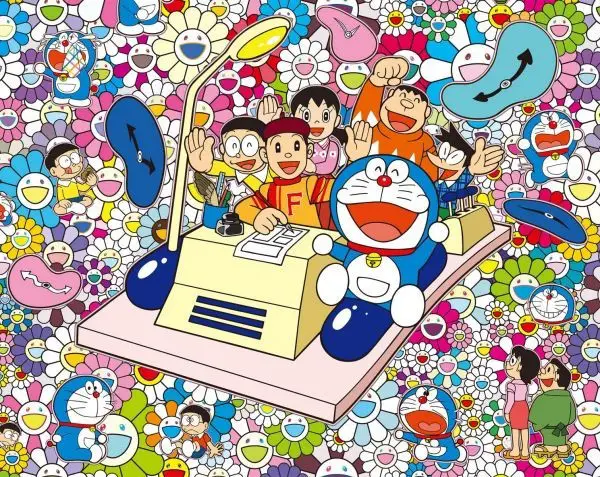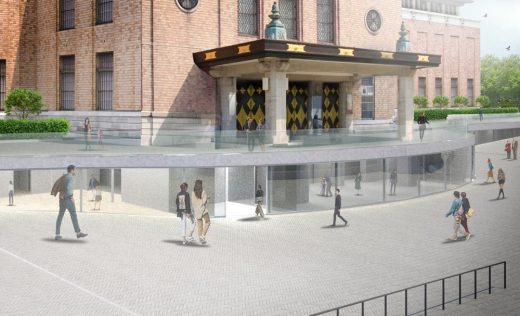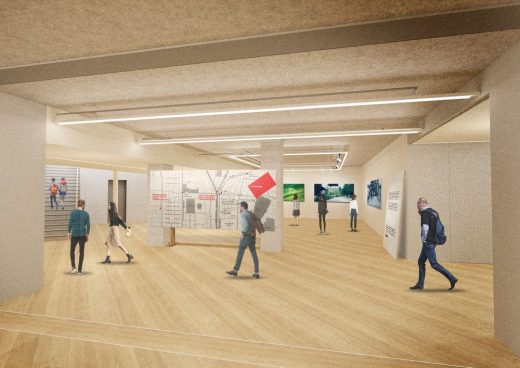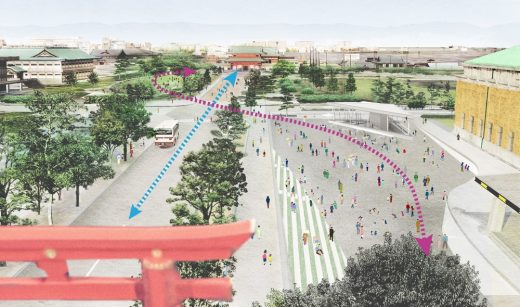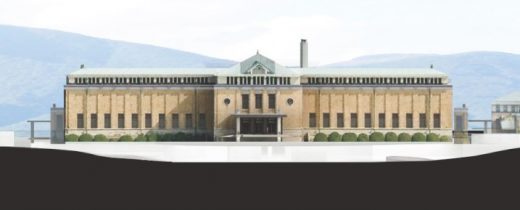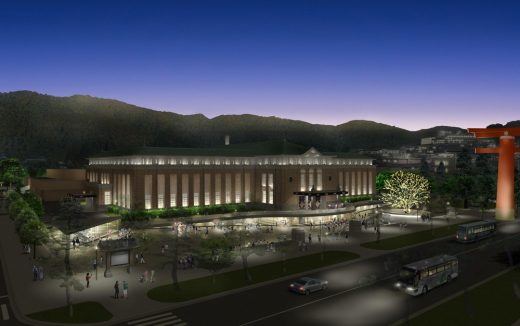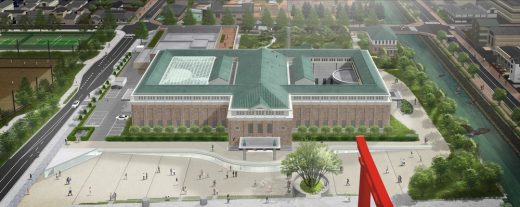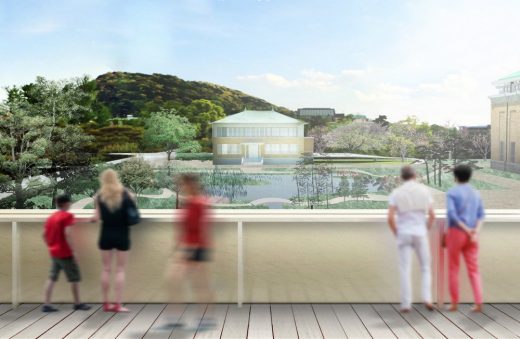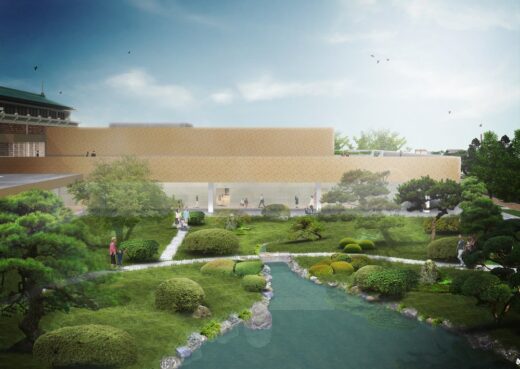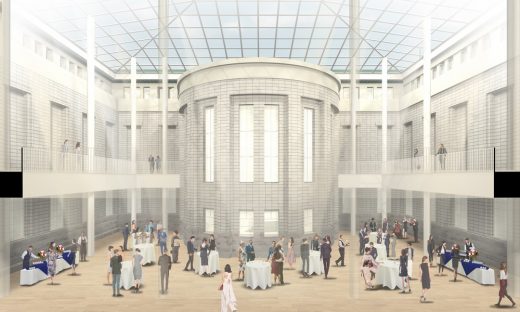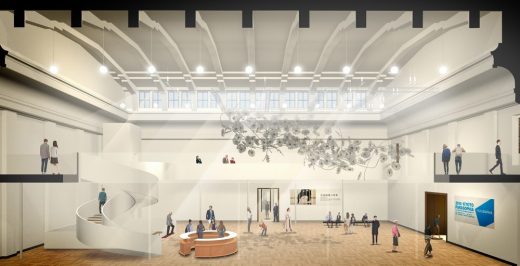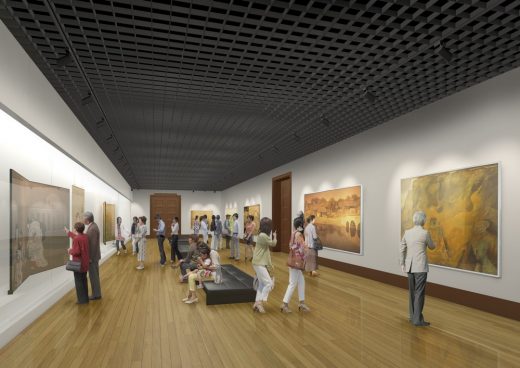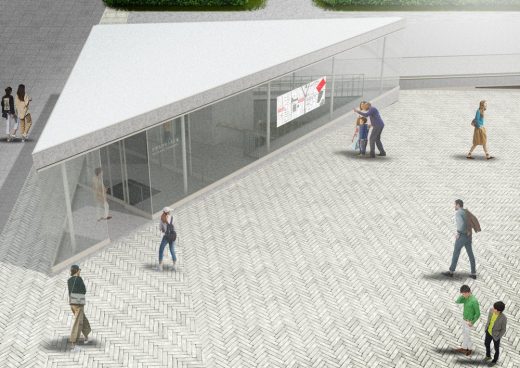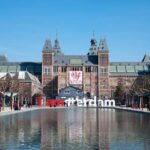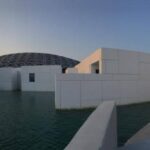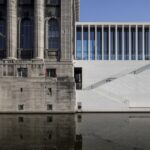Kyoto City KYOCERA Museum of Art Building in Kyoto City, Japanese Building Project, Architecture
Kyoto City KYOCERA Museum of Art Building
New Architecture Development in Japan design by Aoki Jun Architect
post updated 9 Dec 2020
Kyoto City KYOCERA Museum of Art Exhibition
2021 Exhibition Schedule News
The Kyoto City KYOCERA Museum of Art is celebrating its 1st anniversary in 2021. The building’s three-year renovation project won a number of architecture and design awards and has been lauded in art and architecture journals as well as travel magazines. It has also become a popular film backdrop and its light-filled public spaces are attracting many visitors.
An advance reservation system initiated in response to COVID-19 remains in place as of this writing (November 2020). Additionally, the planned Andy Warhol exhibition, one of the highlights of the 2020 schedule, had to be postponed. Things got off to a good start, however, with the Hiroshi Sugimoto − Post Vitam inaugural exhibition installed at the new Higashiyama Cube, wing for contemporary art.
Art critic Noi Sawaragi, known for incisive analysis of contemporary art, has been invited as curatorial supervisor for the exhibition Bubbles/Debris: Art of the Heisei Period 1989–2019 at Higashiyama Cube early next year. The exhibition focuses on the Heisei Period (1989–2019), a time of unprecedented disasters and economic stagnation in Japan. To explore the response of Japanese artists and art groups to the conditions of the Heisei Period, Sawaragi selected fourteen artists and art groups to exhibit.

Takashi Murakami Wouldn’t It Be Nice If We Could Do Such a Thing, 2017 (detail) ©2017 Takashi Murakami/Kaikai Kiki Co., Ltd. All Rights Reserved. © Fujiko-Pro
To commemorate the 1st anniversary in 2021, the Museum is presenting, after half a century, Kyoto female artist Shoen Uemura’s (1875- 1949) retrospective exhibition. The comprehensive Kyoto Modern Architecture exhibition (provisional title), plus a walking Kyoto architecture tour, is also on the schedule.
Also planned is a solo exhibition by appropriation artist Yasumasa Morimura (1951 – ), active for over 35 years visualizing the intersection of personal identity and world history with portraits of himself as diverse figures irrespective of gender and race. THE Doraemon Exhibition KYOTO 2021, postponed due to COVID-19, will be presented in the summer of 2021 with works by contemporary artists themed on Doraemon, the character that has been delighting children for over 50 years.
For 2021 schedule and details
In 2021, the Kyoto City KYOCERA Museum of Art will explore the interplay of tradition and innovation in Kyoto by introducing modern and contemporary fine art, anime, architecture, and many other art genres.
*Content may be subject to change due to conditions related to COVID-19.
12 Apr 2019
Kyoto City KYOCERA Museum of Art News
Architect: Aoki Jun
Location: Takeda Tobadonocho, 6, Fushimi Ward, Kyoto, Japan
Aoki Jun Appointed Director of Kyoto City KYOCERA Museum of Art
Kyoto City KYOCERA Museum of Art, formerly known by Kyoto Municipal Museum of Art is pleased to announce the appointment of the architect Aoki Jun as its new director, effective April 1. Aoki also has been deeply involved in the Museum renewal project since its earliest design stage.
We are extremely pleased to announce the highlights of the Kyoto City KYOCERA Museum of Art Renewal Project.
The Museum opened in 1933 as the Kyoto Enthronement Memorial Museum of Art in Kyotoʼs Okazaki district, itself an expression of the cityʼs modern trends at the time. The establishment of the Museum owes much to the generous support of many local citizens.
It was renamed as the Kyoto Municipal Museum of Art after World War II. As Japanʼs oldest public art museum housed in its original architecture, its classical visage standing against the backdrop of Higashiyama has been highly appreciated for 85 years.
The innovative concepts of Aoki Jun and Nishizawa Tezzo, two leading Japanese architects, for the Museum renewal project preserved original elements while introducing new designs, allowing for a fusion of old and new to create a fresh image for the Museum.
This renewal project has sought to address issues related to the structure of the Main Building dating from 1933 and, moreover, to achieve designation as a national cultural asset.
We aimed to be a venue meeting all requirements to function as a museum in contemporary society while, to the extent possible, preserving historical architecture. Our goal is to create a museum of art that will universally attract visitors and preserve a legacy for the future.
Looking forward to the opening scheduled for spring 2020, we are proud to now introduce all aspects of the architectural plan of the Kyoto City KYOCERA Museum of Art.
A Museum Where Time Converges
The Main Building of the Museum is the oldest among Japanʼs existing public art museums. Completed in 1933, in the socalled Crown Imperial Style of architecture, it has been an important presence in Kyoto for more than 80 years.
Though architecture itself does not move or change, the way people view and experience architecture does change with time. The multiple exposures presented by architecture create a rich manifold image. To respect that while renovating a structure to be suitable for the current age is highly important for the future. I am acutely aware of the significance and responsibility involved in the current large-scale renewal of the Museum.
In going forward with the plan for the renewal of the Museum, we have sought continuity with the existing image while adding a new layer to that. My idea was to allow a new visage to emerge while preserving the underlying architecture.
Among my priorities was to retain the open plaza area on the west side facing Jingumichi, and to strengthen the original axis that passes through the East Entrance to the Main Entrance. I first made a cut between the west side plaza and the main building and depressed the central foreground to make it a slope gently descending toward the center.
In this way, the view of the main building seen from Jingu-michi remained while the entrance was moved from the first floor to the floor below.
The cut was fitted with glass to make a new ʻglass ribbonʼ space for the museum shop and café. I created a grand staircase straight ahead of the underground entrance, going through the space that had previously been used for a ʻfootwear roomʼ and I inserted a strong axis extending straight from the east entrance Central Hall (previously a large display room) to the Japanese garden overlooking Higashiyama. I tried to draw out the Museumʼs embedded axis.
In addition, we eliminated the facility equipment that occupied the north and south courtyards and returned the south courtyard to its original use as a courtyard. We covered the north courtyard with a glass roof, making it an indoor space. In this way, I tried to excavate certain of this Museumʼs possibilities that had been hidden for a while.
In order to create a new exhibition room for contemporary art and a new facilities equipment room for the entire building, we had an extension (storage room) designed by Kawasaki Kiyoshi* rebuilt for the new building. I tried to keep a balance between eliminated and retained elements in the new building, such as the characteristic brick tiles of the Main Building and the large volume of the new building.
By creating contrasts in this way between old and new, we have tried to achieve something more subtle and totally different from straightforward repair.
KYOCERA Square
Sloped open space where visitors gather and interact
Located at the main entrance of the Museum in Kyotoʼs Okazaki district, a center of the cityʼs historical, cultural, and natural spaces, KYOCERA Square provides a landscape for people to gather, relax, and interact, to enjoy performances and events as well as exhibitions. The area is magnificent at night with the façade of the Main Building illuminated.
For major events that incorporate the entire KYOCERA Square, audiences will be able to sit on the slope facing the Main Building façade, resulting in a view that integrates the space of the Museum and plaza.
Glass Ribbon
New modern design, symbolizing the renewed museum
In front of KYOCERA Square, Glass Ribbon pre-eminently symbolizes the renewal project. Its light and transparent streamlined design showcases the fusion of new and historical architecture and also acts to interconnect the museum main entrance outside with the Museum shop and café inside. More broadly, it connects the Museum with the Okazaki district surroundings.
Main Building: South Wing, North Wing
Historical space for experiencing art and culture
The facilities will be renewed and updated while classical design and historical elements dating from the time of the establishment of the building will be retained as much as possible. The first floor South Wing, a space of approximately 1000㎡, will be reserved for exhibition of art from the Museum collection, rotated along with the seasons.
The second floor South Wing retains its original architecture and makes use of natural light. Curated exhibitions and exhibitions featuring exchanges with other museums, or international touring exhibitions, and group exhibitions will be held in the massive spaces of the second floor South Wing and the North Wing.
Kyoto City KYOCERA Museum of Art images / information received 120419
Location: 6, Takeda Tobadonocho, Fushimi Ward, Kyoto, 〒612-8501, Japan
Phone: +81 75-604-3518
New Japanese Architecture
Contemporary Japanese Architecture
Japanese Architecture Design – chronological list
Kyoto Buildings
Architect: Eastern Design Office
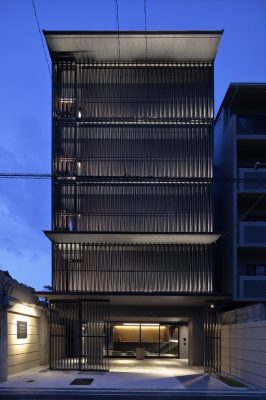
photography : Koichi Torimura, Jeffrey Friedl, Takashi Inaizumi
Hotel Ninja Black in Kyoto City
Kanoko Building, Hushiki-ku, Kyoto, Japan
Architects: Eastern Design Office
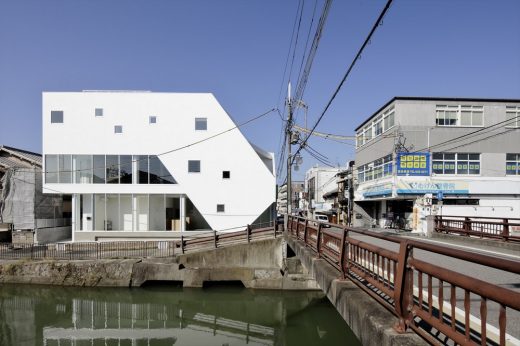
photographer : Koichi Torimura
Kanoko Building in Kyoto City
House in Muko
Design: Fujiwara Architects
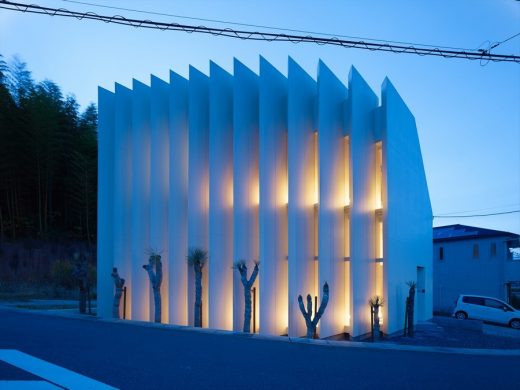
photo : Yano Toshiyuki
New Kyoto Residence
Panasonic Headquarters Kyoto Building
Kyoto Prefecture Library and Archives
Higashi Honganji Founders Hall Kyoto Building
Comments / photos for Kyoto City KYOCERA Museum of Art 2021 Exhibition Schedule – page welcome

